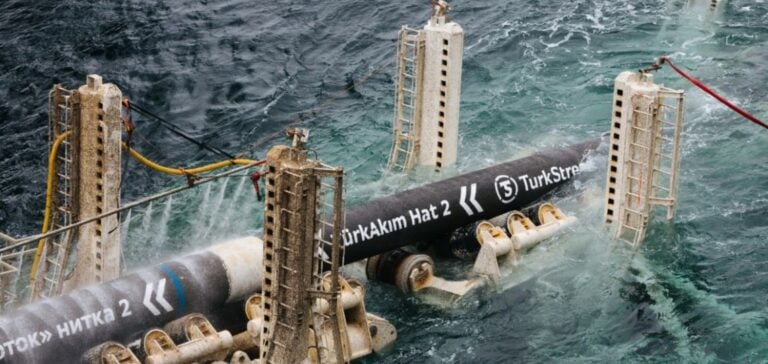In June, Russian gas exports to Europe via the TurkStream pipeline fell to an average of 37 million cubic meters per day. This reduction was due to planned maintenance that interrupted flows for five days. This drop directly affects the countries of Southeast Europe, which are dependent on Russian gas.
Impact of maintenance on flows
Gas flows via TurkStream at the Strandzha 2 inlet on the border between Turkey and Bulgaria totaled 1.1 billion cubic meters in June, compared with 1.35 billion cubic meters in May. This decrease is due to maintenance work from June 4 to 8, during which flows were completely interrupted. After maintenance, flows resumed, reaching almost 50 million cubic meters per day by the end of the month.
Consequences for Importers
The main beneficiaries of Russian gas via TurkStream are Hungary and Serbia, which maintain close relations with Moscow. Hungary continues to import significant volumes of Russian gas, with a 15-year contract signed with Gazprom for 4.5 billion cubic meters per year, supplemented by additional volumes totaling over 5.5 billion cubic meters in 2023. Gas via TurkStream is also delivered to Romania, Greece, Northern Macedonia and Bosnia-Herzegovina.
Transits via Ukraine
Gazprom continues to export gas to Europe via Ukraine, with stable deliveries in 2024, reaching around 42 million cubic meters per day. Austria and Slovakia remain key buyers of this gas. However, the five-year gas transit agreement between Russia and Ukraine will expire at the end of 2024, making the future of this transit uncertain.
Perspectives and Alternatives
Slovakia has proposed the creation of a European consortium to take delivery of gas at the Russian-Ukrainian border, in order to guarantee continuity of supply after 2024. Hungary supports any solution that strengthens the security of its gas supply. Austria, on the other hand, has ruled out any participation in such a consortium.
The reduction in gas flows via TurkStream in June and the uncertainty surrounding transit via Ukraine highlight the need for Europe to diversify its sources of gas supply. European countries need to cooperate and plan strategically to ensure long-term energy security.






















